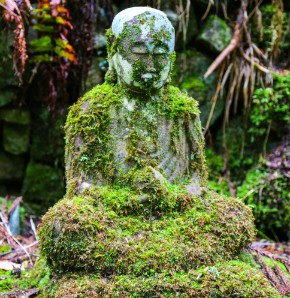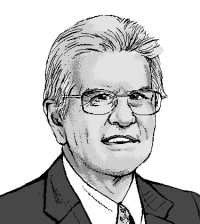Empty temples in Japan

Sixty years ago, Philip Larkin’s poem “Church Going” offered an acerbic vision of religious decline. He imagines the ever shrinking numbers that will attend England’s churches until finally only a few superstitious neighbors prowl the church grounds in search of omens and visions. And even that is not the last stage: “But superstition, like belief, must die, / And what remains when disbelief has gone?”
The sharp decline of institutional faith in contemporary Europe has made Larkin’s vision seem all too relevant, as the fate of disused buildings becomes a pressing issue for national churches in all traditions.
If we want to see a faith in real decline, however, we need to look outside the bounds of Christianity altogether. In recent years, observers of the Japanese scene have noted the alarming trends facing Buddhist and Shinto believers. This might well provide an example for understanding conditions in other countries, especially those on the front lines of European secularization.
Read our latest issue or browse back issues.
Japanese Buddhists speak especially grimly about the parlous state of their faith. Although some 75 percent of Japanese report themselves as Buddhists, few ever have contact with a temple. Buddhist priests are well aware that they are largely of the older generation, offering little appeal to the young, although some younger clerics try to repackage their message in trendy contemporary forms. (At every stage of this story, the analogies to Western Catholics are obvious.) Although families used to rely on Buddhist clergy for funeral services, nonreligious alternatives are now popular, and account for a quarter of ceremonies in Tokyo.
The decline in religious adherence has undermined the nation’s structure of religious institutions. Many temples are in deep financial trouble, and Buddhist-linked colleges have been forced to contract, or to abandon their religious affiliation. As in Europe, established institutions have suffered badly from social change. The country has some 80,000 temples and shrines. Through the years, the rural society many of them served has all but evaporated, leaving the greatest shrines and temples isolated in abandoned landscapes, far removed from where people actually live. Few can draw the 200 or so families that are reckoned as the absolute minimum to support an active temple.
The awe-inspiring temples and monasteries that still adorn the Japanese landscape are in dire straits, and around 49 percent of them will probably cease to function by 2040. The centers that do survive struggle on by depending on the kindness of a shrinking and aging pool of devotees. Some 15 percent of temples have no resident priest.
Some local businesses and governments have tried to attract visitors to the old centers, but with little hope of seeking a spiritual revival. Instead, these are purely commercial ventures, encouraging what Europeans call heritage tourism. Many temples survive as social centers for local communities, relying on the income produced by cafés or stores.
Obviously, the religious decline is not absolute; a few shrines do flourish, and some particular holidays still focus communal loyalty. Generally, though, the religious scene is grim if not a near-death experience.
Japanese religious decline owes much to demography, always an excellent diagnostic tool for understanding religious practice. Generally, young and fertile societies tend to be the most religiously active, partly because children involve families in religious-based community activities and education. Conversely, less fertile societies with few children tend to be made up of older people, usually isolated from social or communal networks. As societies age, they become more secular, which is a major factor cited for the sharp decline of faith in a country like Italy. Around a third of Italians are aged over 55, compared to just 7 percent in highly religious Nigeria. Japan, however, stands at the extremely high end of the age scale, with almost 40 percent of its people over 55. Its fertility rate, meanwhile, stands around 1.4, one of the world’s lowest. Naturally, then, its levels of religious practice are in free fall, with no obvious signs of recovery.
In religious terms, Japan looks like Europe, only more so. Many of the themes traced would resonate powerfully with Catholic priests consigned to parishes in the depopulated fastnesses of Italy or Spain. Yet at the same time, the Japanese comparison also points to one of the strengths of European faith. Yes, Europe’s older churches may well fade away, and the aging congregations might seem ever more besieged. But those parishes will increasingly be overshadowed by the exuberant immigrant churches down the block, which cater to Nigerians and Congolese, Filipinos and Brazilians. While Japan all but prohibits immigration, Europe abounds with migrant communities, many of whom are very active Christians.
So what remains when disbelief has gone? The answer is obvious: disbelief will be succeeded by immigrant faith, and the circle is complete.






